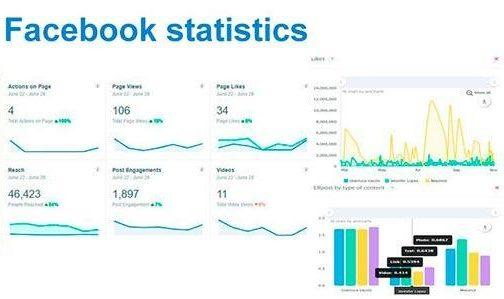Channel Eye has joined forces with Jo Buchanan, the Founder of TwitTwooYou, a business growth strategic consultancy centred on getting brands noticed.
This series gives real-world, practical marketing advice. In the second article of the series, Jo focuses on how to use Facebook effectively.
If your business involves the targeting of consumers, chances are you’ll have a social presence. Depending on the nature of your business, you might be on all the major social media channels, or maybe just a few.
While Instagram has made a huge impact on the social media players’ market (it recently celebrated its tenth birthday) there’s one pro that’s been around much longer and despite a few ups and downs, remains the Big Daddy of social; Facebook.

Facebook isn’t just a place to share photos of your pets and kids, it’s a great place for businesses to share their latest with new and potential customers.
Back in the day, Facebook and other social channels were all about static imagery. Less focus was placed on captions and copy and the term hashtag was pretty unheard of. Spring forward to the present day and it’s all about more defined social ads (now that the cookies are being crunched) making it even harder to reach new audiences.
Social selling is now all about simplifying the customer’s journey. There’s a channel for every generation too, so simply hanging out on one channel won’t cut it, if you’re looking to appeal to more than just one demographic.
But if Facebook is YOUR thing, and why shouldn’t it be? It’s the one social channel that’s downloaded more than any other, there are a few mistakes you should try and avoid…
Mistake one – Where strategy is not a priority

Facebook is one of the biggest advertising mediums out there and never forget that content sticks. Fail to define your strategy from the outset and your content could look chaotic and higgledypiggledy.
Don’t allow your brand’s identity and the products/services you offer to become confused by reactive, inconsistent copy and content.
There are so many tools and apps out there now to help you measure insight and engagement, that you should continually test and iterate against the research and metrics to ensure you’re hitting the right mark.
Mistake two – When you know too little about your audience
Brands that focus more on the channel than the audience they are trying to reach are missing out. In fact, if you are still pushing hard sales messages on your social, then you’re probably failing.
Social is just what it is, social. It’s about community and engagement. It’s about connecting with your audience on a deeper level and remaining as open and accessible as possible.

It’s a good tactic to try and identify who your superfans are. They’re your ambassadors and the ones who have your back. What’s more, they offer a great sounding board to test out new content and also offer you constructive feedback on how well your messaging might be perceived by the wider community.
Superfans can be represented by two types of people. There are the ones who always like, share and comment on your posts (positively) and then there are the influencers, that have a greater sense of leverage over your community/intended audience. If it’s the latter and they don’t yet know or love your brand, now is the time to reach out to them and see how they could help you grow your brand and achieve wider acceptance.
If you can get close to these two groups of people, then you’ll have a far better understanding of what your audience wants to see and consume.
Mistake three – You don’t have a handle on the stats
All social channels offer you insights in various guises and there are also many add-ons you can look to, to better understand how well your social media activity is going.
And yet, there appears to be a degree of misunderstanding placed on what the best metrics are to measure social success. Management often places too much focus on vanity metrics like the number of likes they have on their page. They often ask their social media team for the wrong kinds of metrics that don’t really offer a true insight into the success of the activity,

Instead, social media managers need to provide a different set of metrics that measure the overall performance of their social activity. It’s often easy for social media teams to manipulate the data to make their work look successful and miss the overall sentiment.
For example, if the team starts to increase the frequency of its posts, which in turn leads to an increase in impressions. Good right? Not really, as that increase in posts could be alienating the audience as the quality of that content is both inconsistent, too frequent and out of touch. If you fail to measure the actual engagement of those posts i.e. likes, comments and shares, then you’ll never truly know how well that content is landing with your audience.
Often management put far too much pressure and emphasis on growing the popularity of the social page. But is that right? Surely it’s more about quality over quantity. But as a result of this, social media teams are focusing too much on growth and not enough on engagement. Instead, they should be looking at different metrics like video views, form downloads and lead generation.
In a nutshell and to summarise all of the above. It’s vital you consider your organisational goals. If, for example, you’re looking to increase sales in a particular service by ten per cent through your social media activity, then make sure that your content marketing is aligned with that service. If your content is skewing into completely different and non-relevant areas, then maybe that’s not the best strategy.
Always ask yourself before posting, does this align with my organisation’s overall goals? If the answer is no, then it might not be the right thing to post.
This is a sponsored article.














